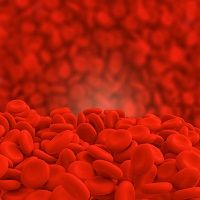Refining Anti-Thrombotic Therapy
Tissue plasminogen activator (tPA) can dissolve lethal clots in the lungs but also carries a risk of excessive bleeding. Tennessee researchers reported on a new approach that worked better in a mouse study.

Pulmonary embolism is a leading cause of in-hospital mortality. Tissue plasminogen activator (tPA) can dissolve these lethal clots but also carries a risk of excessive bleeding.
Reporting at the American Heart Association 2015 Scientific Sessions in Orlando, FL, Satish Singh and colleagues at the University of Tennessee Health Science Center in Memphis, TN, looked at a new approach to breaking up clots.
In a mouse study, the researchers tested the hypothesis that blocking an antiplasmin known as a2AP would dissolve these clots. Working on anesthetized mice, the team treated the animals with tPA and a humanized chimeric monoclonal antibody inactivator of a2AP or a combination of low-dose PA and a2AP-I. The mice had earlier been infused with human thrombi.
They found that while clinical dose tPA dissolved the pulmonary emboli more effectively than no therapy, the mice treated with a2AP-I showed greater thrombus dissolution that tPA or controls.
Alone low doses of tPA did not work, but when combined with a2AP-I, low dose tPA increased clot dissolution more than clinical dose tPA alone or a2AP-I alone.
The combined administration of the two "didn't increase bleeding risk vs. controls and caused less bleeding than tPA," they noted.
The findings suggest "that a a2AP inactivation may be a safer strategy for treating venous thromboembolism," the team concluded. The study is presented in an abstract.